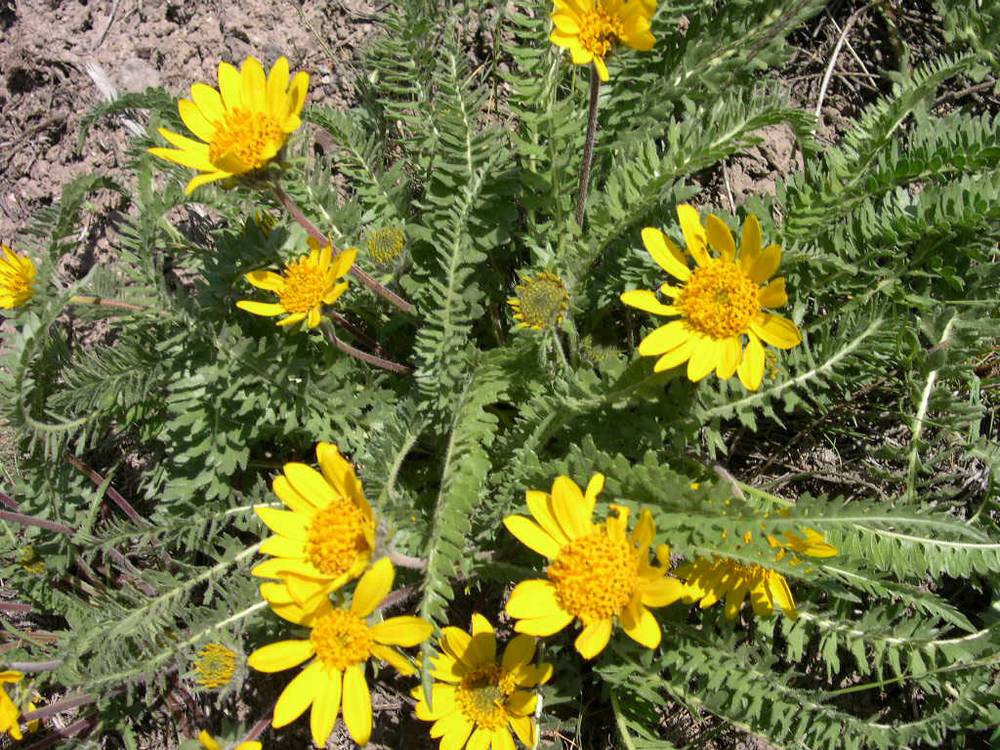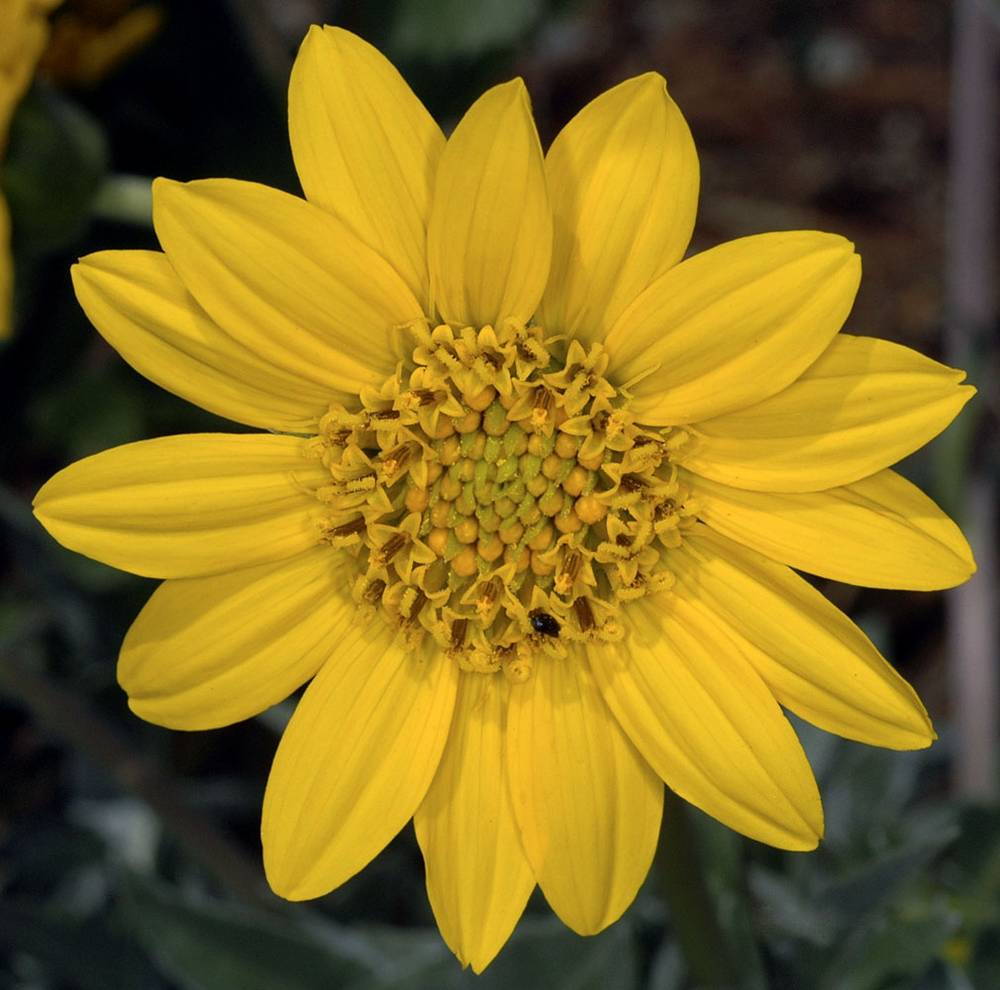Balsamorhiza hispidula
Balsamorhiza sericea
hispid balsamroot
silky balsamroot, silvery balsamroot
8–25 cm, villous-hirsute; from single taproot.
6–38 cm, sericeous; from single taproot.
ovate-lanceolate, 1-pinnately divided with pinnae again lobed, often with only a few lobes at tips or divided;
margins entire, ciliate;
surfaces hispid;
basal leaves in 1–few rosettes;
blades 5–18 × 3–7.5 cm;
pinnae 2–8 mm wide;
petioles 2–9 cm;
cauline leaves in one opposite pair;
blades 1.5–5 × 0.4–2 cm;
petioles 1.5–4 cm.
ovate-lanceolate, 1-pinnately divided almost or entirely to midribs, often more deeply divided proximally than distally;
margins entire or few-toothed, occasionally some lower leaves serrate on lower margins;
surfaces sericeous; more densely so abaxially than adaxially;
basal leaves in 1–few rosettes;
blades 3–18 × 1–7 cm;
pinnae 6–16 mm wide;
petioles 3–17 cm;
cauline leaves in 1 pair; opposite, reduced;
blades 2.5–4 × 1–1.6 cm;
petioles 2.5–4 cm.
with 1 terminal head.
with 1 terminal head.
10–15 × 17–22 mm.
12–15 × 15–22 mm.
deciduous, 10–13, yellow;
rays 20–25 × 5–10 mm.
13–14, yellow;
rays 12–20 × 5–8 mm.
6–7 mm.
~9 mm.
linear to lanceolate, 14–17 × 2–3 mm, with acuminate or caudate tips, ciliate, villous-hirsute.
ovate, 10–17 × 5–9 mm;
tips acuminate, sericeous.
6–7 mm, glabrous.
6–7 × 1.5 mm, glabrous.
7–8 mm.
13–14 mm.
Balsamorhiza hispidula
Balsamorhiza sericea
Dry, often rocky, open areas. Flowering Apr–Jun. 800–1700 m. BR, BW, Owy. ID, NV; northeast to MT, east top WY, southeast to AZ. Native.
While B. hispidula is quite distinct from B. hookeri throughout most of its range, it intergrades completely with B. hookeri in Oregon. Although the two species have been kept separate in this treatment, most Oregon specimens of B. hispidula show some evidence of gene flow from B. hookeri. Balsamorhiza hispidula also hybridizes with B. sagittata. The specific epithet refers to the pubescence of the plants.
Serpentine. Flowering Apr–May. 400–600 m. Sisk. CA. Native.
Balsamorhiza sericea is endemic to serpentine-influenced soils and is thus far known only from Josephine County, Oregon, and adjacent Siskiyou and Trinity counties, California. The specific epithet “sericea” refers to the pubescence.
Abigail (Abby) Moore
Abigail (Abby) Moore





